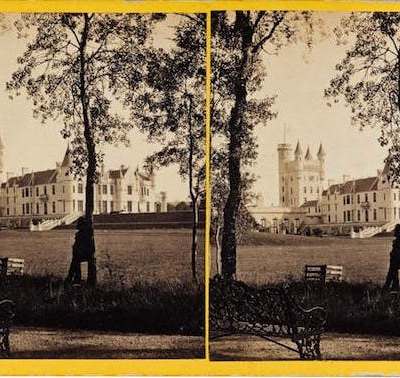The closure of the Bourne & Shepherd studio in Kolkata brings to an end the history of the oldest photographic business in India and perhaps in the world. The firm of Shepherd and Robertson was established in Agra in 1862 and the following year, in Simla, the hill-station which would soon become the British summer capital, it became Bourne & Shepherd when Charles Shepherd was joined by Samuel Bourne, newly arrived from England.
Fatehpur Sikri, The Great Gate (1886), Samuel Bourne.

Samuel Bourne (1834–1912) was, for a short time, the leading commercial photographer in India and a figure of considerable importance in the history of photography. Originally a banker, he took up landscape photography in 1854 and nine years later answered, as he put it, ‘the call of the East.’ Possessed of an almost mystical sense of landscape as a manifestation of the divine, he was soon exploring beyond Simla ‘to see what elements of beauty and grandeur lay concealed in some of the higher and little known regions of the Himalayas.’ Using Frederick Scott Archer’s wet collodion process, Bourne produced large albumen prints from glass plates which won awards in international exhibitions. This was no mean achievement: a later expedition to the Kashmir lasted nine months and required over 50 coolies to carry his supplies and equipment.
Agra, The interiors of the Moti Masjid (c. 1860), Samuel Bourne. Courtesy MAP / Tasveer

Bourne also photographed the antiquities of India such as the Moghul buildings at Agra and Fatehpur-Sikri. He also recorded sites associated with the ‘Mutiny’ of 1857–58 in Lucknow and Cawnpore. As for the capital of British India, Calcutta, where Bourne & Shepherd soon established a studio, he found it – reflecting the conventional taste of his time – ‘a place totally devoid of architectural beauty’ although he did make photographs of some of the classical buildings which made an earlier generation compare the city with St Petersburg. (The colonial buildings of Calcutta were, in fact, recorded both early and comprehensively, what with Frederick Fiebig making hand-coloured calotypes of the city by 1851).
Lucknow, The Hussainabad Imambara of Muhammad Ali Shah (1866), Samuel Bourne. Courtesy MAP / Tasveer

Bourne left India for home in 1870, leaving behind him over 2,000 glass negatives. For landscape photography he was then replaced by Colin Murray. Opening studios in Bombay and other cities, Bourne & Shepherd became one of the leading commercial photographers in India specialising in portraits as well as topographical views. The firm took many of the evocative portraits of the native Indian Princes who travelled to Delhi in 1877 for the Durbar celebrating Queen Victoria’s elevation as Empress of India. In 1911 the firm became the official photographers for the last of the spectacular Delhi Durbars – the one at which George V announced that the seat of government would move from Calcutta to the ancient capital.
Udaipur, His Highness, Maharana Sajjan Singh (1877), Bourne & Shepherd. Courtesy MAP / Tasveer

The Simla studio closed in 1910. The Calcutta studio would continue for another century, under several ownerships. It is unlikely that it would have long survived the advent of digital photography, but the real disaster was a fire in 1991 which destroyed most of the archive. Fortunately, however, prints produced by Samuel Bourne and by Bourne & Shepherd are preserved in museum archives throughout the world – not least in the Alkazi Collection of Photography, based in New Delhi, which has done so much to assemble and publish the early photographic records of India, visual documents which are so valuable and enthralling both historically and artistically.



